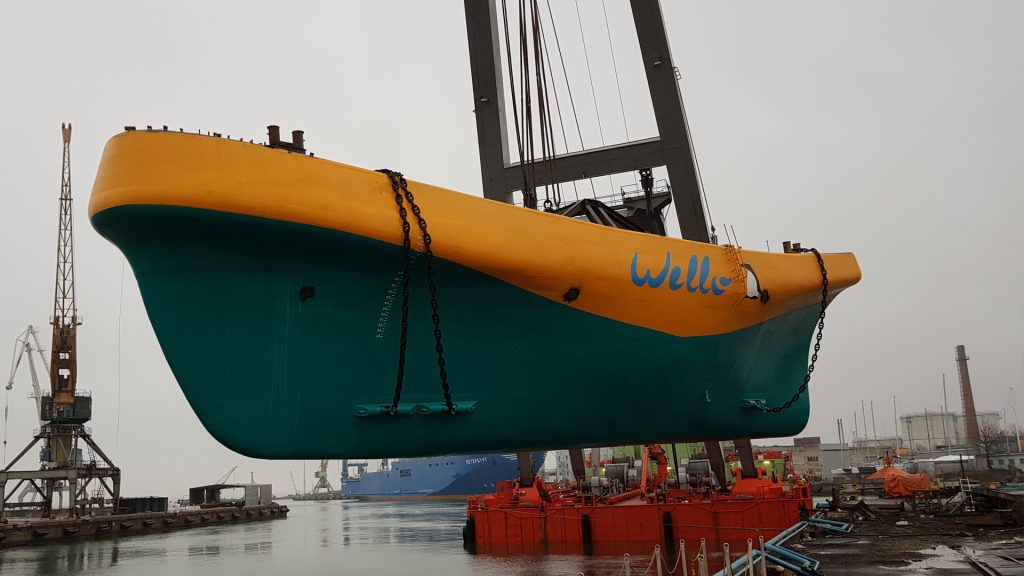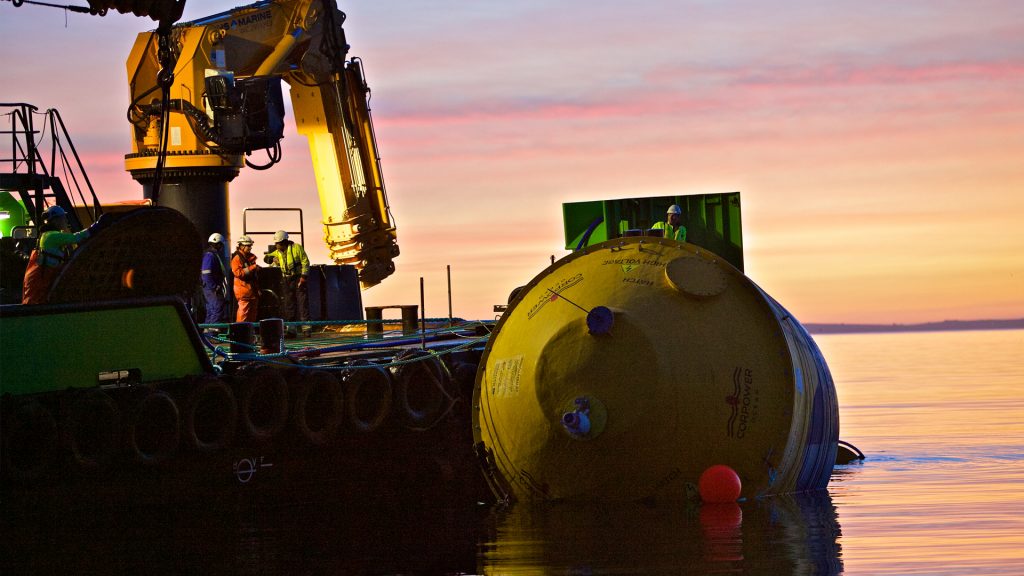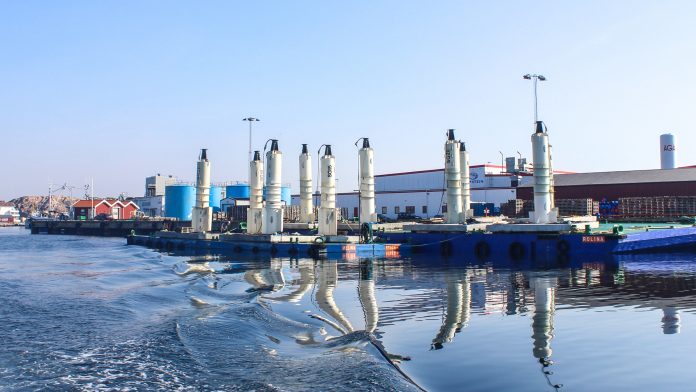The Innovation Platform’s Managing Editor, Michelle Gordon, spoke to Ocean Energy Europe about how the ocean energy sector is progressing and the importance of wave and tidal energy to the future of the European economy and its ability to meet carbon neutrality targets
The oceans are the world’s largest untapped source of renewable energy. By 2050, ocean energy can provide 10% of Europe’s current electricity needs and 400,000 jobs, and European industry continues to benefit from its experience and expertise in the sector. Indeed, European companies account for 66% of tidal energy patents and 44% of wave energy patents globally, meaning that they are well-placed to capture a global market estimated to be worth €53bn annually in 2050.
Ocean Energy Europe (OEE) is the largest network of ocean energy professionals in the world, representing the interests of over 120 organisations, including Europe’s leading utilities, industrialists and research institutes.
The Innovation Platform’s Managing Editor, Michelle Gordon, spoke to OEE about how the sector is progressing in Europe, how OEE is supporting its continued development, and the importance of wave and tidal energy to both the future of the European economy and its ability to meet carbon neutrality targets.
Could you provide an overview of the wave energy sector in Europe?
11.3MW of wave energy has been installed in Europe since 2010. Cumulative capacity has been increasing steadily, showing that the sector is developing and, as the technology advances, devices are surviving longer in the water and producing more power than anticipated.
1.5MW of this capacity is currently in the water – as testing programmes are completed, data is collected, and machines are decommissioned to make way for the next iteration. We are currently seeing developers moving from testing smaller prototypes to deploying full-scale demonstration projects – a sign that the technology is getting closer to maturity.
The majority of wave energy activity is still in Europe, where it all began. Despite the COVID-19 pandemic, Europe is still set to deploy up to 2MW1 of wave energy, demonstrating the resilience of the sector. The rest of the world is stepping up its activity, installing more capacity than Europe for the first time in 2018, with strong support from the Chinese and American governments yielding several new domestic projects.
Broadly speaking, wave energy projects can be split into two groups – those in high-energy environments such as the Atlantic and North Sea, and those in calmer waters, such as the Mediterranean. The diversity of device types means that different technologies can be used according to the conditions at a given location, and that they can be used for a wide range of different applications. As well as large-scale projects designed to power Europe’s homes and businesses, wave energy can be used to power entire islands, offshore installations, aquaculture, marine equipment, and desalination plants.
Activities in the Atlantic and North Sea coasts include:
- Finnish developer Wello’s brand new 1MW ‘Penguin’ wave converter is now on its way to start a two-year test programme in northern Spain, following successful testing of the first full-scale device;
- Swedish CorPower Ocean’s commercial-scale C4 device will hit the waters of Northern Portugal in 2021, after its half-scale machine proved its reliability and exceeded power production expectations in Orkney, Scotland;
- Finnish manufacturer AW-Energy is gearing up to export its full-scale Waveroller device worldwide after successful testing in Portugal;
- Marine Power Systems, based in Wales, is gearing up to deploy a full-scale wave energy device which can also be combined with a wind power module to provide even more power; and
- French outfit GEPS Techno has a full-scale wave-solar hybrid installed in the French Atlantic, which is designed to power off-grid marine installations and islands.
Activities in the Mediterranean include:
- Italian power producer, Enel Green Power is working with home-grown developer 40South Energy on the updated version of its device in the Marina di Pisa;
- Also in Italy, project developer Eni is active in the sector, with a project in the Adriatic Sea (with the US-based OPT technology) and another in Ravenna;
- Danish outfit Wavepiston signed a €4.9m contract for a combined wave and desalination project in Sardinia and also has a project underway to install a full-scale device in Gran Canaria, Spain; and
- SINN Power from Germany have five full-scale wave machines installed on the Greek island of Crete, with a bigger array in the pipeline.

What are Ocean Energy Europe’s ultimate aims and objectives? What is it doing to support and help grow the European wave energy sector?
Ocean Energy Europe’s main objective is to build a vibrant ocean energy sector in Europe which maximises its potential both in terms of resource and in terms of economic and environmental benefits. Creating a supportive policy environment in which this can happen is a major part of our work, both at the EU and national levels.
We advocate for the ocean energy sector at the European level and engage in dialogue with national and regional governments, focussing on relevant policy dossiers and funding mechanisms. For wave energy, we place a particular emphasis on RD&I funding via programmes such as Horizon Europe, but also on innovative financing tools for demonstration projects. We are also active in relevant EU projects, such as the new EuropeWave, which will support wave energy developers to advance their technology via a ‘stage-gate’ process. To date, the EU has allocated €650m for ocean energy activities since 2007.
The European Commission envisions a significant role for ‘emerging technologies’, including wave energy in its new offshore renewable energy strategy. What does that mean for the future of the sector?
The inclusion of ocean energy in the forthcoming strategy is very positive indeed! It recognises the industrial potential of ocean energy and the need for a greater diversity of renewable energy sources in addition to wind energy and solar PV.
Ocean Energy Europe is calling on the European Commission to include an ambitious deployment target of 100MW by 2025 for ocean energy in the strategy. This target should be flanked by four priority actions, designed to accelerate growth and reduce risk – as outlined in our recent position paper. By doing this, the EU will provide the stimulus for 2.6GW of ocean energy in Europe by 2030. This will give a clear signal to both the sector and investors, leveraging more private investment and getting an increasing number of machines in the water, which would propel this new industry into the mainstream, where it can replicate the successes of its offshore wind predecessor.
What are the main drivers for the sector’s growth in Europe?
The story of the offshore wind sector shows us that strong, supportive policies directly increase deployments, which in turn brings down costs. The more wave energy capacity is installed, the more economies of scale and accelerated learning will bring down costs.
Revenue support – typically in the form of feed-in-tariffs – is needed at the national level to give developers and investors greater certainty and to leverage private financing. This kind of ‘blended’ public-private financing is the best shot for developers to climb out of the ‘valley of death’. Revenue support would offer wave energy the same opportunities that mature renewable technologies have enjoyed for decades.
How do you predict the sector will grow over the next 30 years?
What percentage of EU power demand will be met by wave energy in 2050?
Our recent 2030 Ocean Energy Vision shows that by the end of the decade, 2.6GW of ocean energy could be installed in Europe. By 2050, this could grow to 100GW. Up to 80GW of that could come from wave energy, equivalent to 8% of the EU’s current electricity consumption.
This is still just a fraction of wave energy’s massive global potential. In fact, with an estimated potential capacity of 29,500TWh per year, wave energy alone could theoretically meet all of the world’s energy demands.
Are there any challenges/issues that could potentially affect that growth? And if so, how is OEE supporting the sector to overcome them?
As already mentioned, strong policy frameworks are a crucial factor in the success of the sector, as they will bring down costs and leverage private investment. Co-operation between countries is also essential for the success of the sector. We can already see from the projects that are underway just how ‘transnational’ wave energy is, with many involving partners from two, three, or even more countries. Aligning permitting, monitoring, and standards across borders will make installing wave energy smoother and faster.

Swedish CorPower Ocean’s commercial-scale C4 device will hit the waters of Northern Portugal in 2021, after its half-scale machine proved its reliability and exceeded power production expectations in Orkney, Scotland
How important is research and development to the future of the wave energy sector? What have been the most important developments/technological advances in recent years? How significant a role are European companies playing in R&D?
Wave energy technology has its origins in Europe – the first wave energy device was created in France in 1799. Although innovation in ocean energy is picking up in the rest of the world, a quarter of all patents in ocean energy still originate from European countries.
The experience gained by European companies as the frontrunners in wave and tidal energy mean they are already looking to export their technology globally, and indeed many projects in other parts of the world use European technology and expertise.
Continued investment in research and development is important for wave energy. While a wide range of designs caters for different sites and varying wave strengths, there is still the need for some consolidation of the design and standardisation of components, particularly for utility-scale devices.
In recent years, developers have been successful in proving the reliability and robustness of their machines, while exporting ever-increasing volumes of power to the grid. This needs to be supplemented by consistent power generation data in order to boost investor confidence.
How much of an issue is access to finance? How does OEE support the sector to access funding?
Access to affordable finance is critical for wave energy developers – as it is for all emerging technologies – in order to cross the ‘valley of death’. While public funding is still an important part of getting any wave energy project off the ground, it serves an even more important function in reducing project risk and leveraging private finance.
OEE actively works with the EU institutions and national governments to make sure these instruments are fit-for-purpose and to cater to the needs of ocean energy technologies. The Innovation Fund, the BlueInvest Platform, and the European Investment Bank’s InnovFin EDP are all examples of financing instruments that provide grants, loans, and equity to get projects over the line.
How important is wave energy to achieving a carbon neutral future?
All recent major models of the future energy system, from IRENA to Bloomberg NEF, show Europe running on between 80-100% renewable energy in 2050. Making this a reality means deploying second-generation technologies such as wave energy alongside mature renewables such as wind and solar. In a decarbonised energy system, diversity is strength.
Why does wave energy have such a vital role to play in creating a stable, low-cost energy system? Apart from being emission-free, abundant, and infinite, wave energy’s trump card in this scenario is its complementarity to wind and solar power. These variable renewables need careful balancing to make sure the lights stay on. The advantages of waves include the fact that they are more predictable and that they generate power long after the wind has dropped, helping to smooth out electricity production.
How important is wave energy to Europe’s future economic growth?
Ocean energy technologies such as those concerning wave energy embody the dual goals of the EU’s Green Deal. Delivering this flagship recovery strategy relies on the large-scale deployment of new, clean technologies and on building resilient industries that can withstand economic uncertainty.
By 2050, ocean energy could bring 400,000 jobs to the European economy. Coastal regions and the maritime sector will undoubtedly benefit from this new economic activity, with countless opportunities for diversification and co-operation. Even countries without a coastline can get in on the act – the supply chain extends across Europe, bringing skilled jobs to people and companies with expertise in manufacturing and services.
Even before the coronavirus crisis, it was clear that ‘business-as-usual’ was not going to be enough to deliver a sustainable energy future. Wave energy is a perfect example of a disruptive technology that not only has a vital role to play in the energy transition, but also in a recovery that is environmentally, socially, and economically just.
References
- Revised downwards from original estimate of 3MW (see OEE’s 2019 Stats & Trends), due to unavoidable delays caused by COVID-19 restrictions
Ocean Energy Europe (OEE)
+32(0)2400104
a.parsons@oceanenergy.eu
Tweet @OceanEnergyEU
www.oceanenergy-europe.eu
Please note, this article will also appear in the fourth edition of our new quarterly publication.







